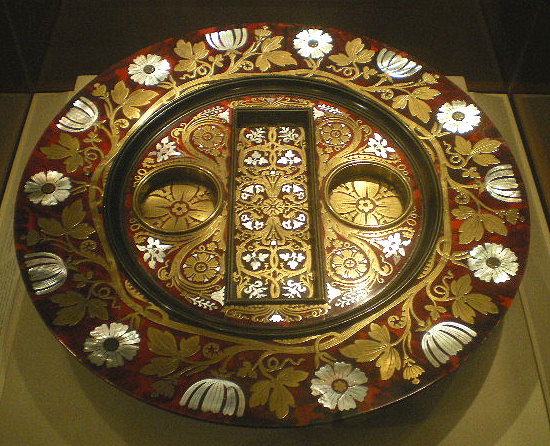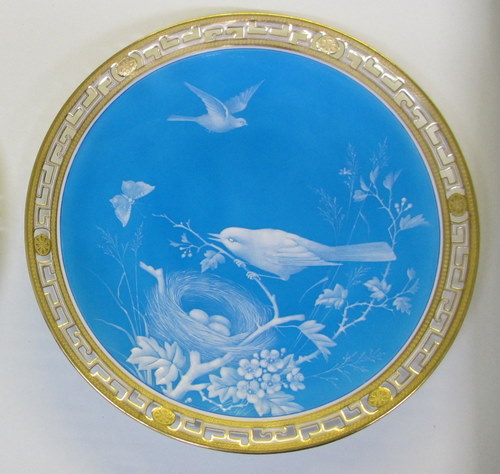
Tortoise shell with inlaid mother-of-pearl and engraved brass ink stand by English designer George Bullock, circa 1815.
This same union of material and spiritual dimensions is not limited to highly specialized projects like cathedrals; it can also be seen in products found in everyday life. The spiritual dimension introduced added value, culture, and warmth to the most common things. About such production, Lewis Mumford writes, “No article, even of vulgar daily use, was regarded as finished, unless it bore some unmistakable stamp, by its painting or modeling or shaping, of the human spirit.”*

Minton Pâte-sur-pâte cabinet plate. Pâte-sur-pâte method of porcelain decoration in which a relief design is created on an unfired, unglazed body by applying successive layers of white slip (liquid clay) with a brush. Hand painting was extremely time-consuming, sometimes taking months to complete. The technique was first employed by the Chinese in the 18th century. It was introduced in Europe in about 1850 at Sevres, where it was perfected by Marc-Louis Solon, who later worked for Minton. The technique was also used in the United States, at the Rookwood factory in Cincinnati, Ohio.
Historian Carlo Cipolla notes how simple products became veritable works of art because “the beauty and perfection of many products of European pre-industrial craftsmanship give the inescapable impression that the craftsman of the time found in his work a satisfaction and a sense of dignity which are, alas, foreign to the alienating assembly lines of the modern industrial complex.”**
* Lewis Mumford, Technics and Human Developmen, Vol. 1 of The Myth of the Machine (New York: Harcourt, Brace, Jovanovich, 1967), 253. We might also note that, for example, antique collecting purists consider 1830 as the latest date that defines the antique since pieces after that date were increasingly mass-produced by machines and thus without that warm human stamp.
** Carlo M. Cipolla, Before the Industrial Revolution: European Society and Economy, 1000-1700 (New York: W. W. Norton, 1976), 91.
John Horvat, Return to Order: From a Frenzied Economy to an Organic Christian Society—Where We’ve Been, How We Got Here, and Where We Need to Go (York, Penn.: York Press, 2013), 291-2.












